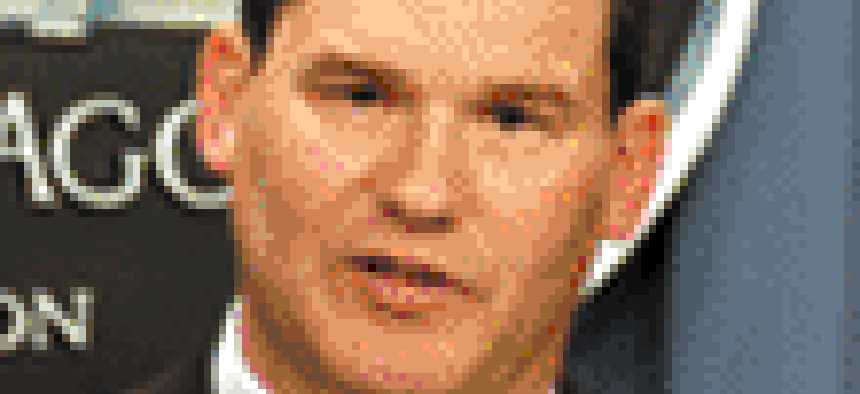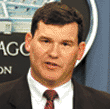Pentagon to spend $4 billion on UAVs

The Defense Department plans to spend up to $4 billion on unmanned aerial vehicles over the next seven years, according to a just-released Pentagon blueprint detailing the future of military UAVs.
The Defense Department plans to spend up to $4 billion on unmanned aerial vehicles over the next seven years, according to a just-released Pentagon blueprint detailing the future of military UAVs.The Defense Department road map envisions UAVs to have the ability to run on quiet, long-lasting fuel cells, enabling longer-range, covert surveillance missions as well as improved communication links to provide more information faster to commanders.Released March 26 to Congress, the new plan, Unmanned Aerial Vehicles Roadmap 2000-2025, also provides a guide for information technology companies willing to work with prime contractors. For instance, systems integrator Harris Corp., Melbourne, Fla., sees a future market in Sierra radio encryption chips in remotely controlled devices, such as UAVs, said Richard Rzepkowski, vice president of the company's government systems unit. It is essential that such devices have secure data and control communication operations, he said. Spoofing a control signal could have devastating consequences.[IMGCAP(2)]Tim Beard, director of business and strategy development for unmanned systems for Northrop Grumman Corp., Los Angeles, said his company is studying the blueprint with the thought of "how to figure out the directions ahead and what partnerships we could form to go into new areas." The blueprint comes at a time when UAVs are seeing increased use in both Afghanistan and Iraq. Dyke Weatherington, deputy of the UAV planning task force at the Defense Department, told Congress that 10 UAV systems are in use in Iraq, noting that during the Persian Gulf War, only a few systems were used. Weatherington, who testified at a March 26 hearing of the House Armed Services subcommittee on tactical air and land forces, said this is "the largest increase in the use of UAVs" during times of conflict.Weatherington also said today's UAVs are made largely from off-the-shelf components. Consequently, an increase in UAV production would spark more work for IT vendors, industry observers said. Vehicles such as Global Hawk, developed by Northrop Grumman, rely mostly on an onboard computer to control flight. Since it flies at a high altitude, Global Hawk is particularly useful for taking wide-range surveillance photos. It has been used extensively in surveillance work in the conflicts in Iraq and Afghanistan. During the hearing, Weatherington said the cost for each Global Hawk runs about $37 million. Other UAVs, such as Predator, produced by General Atomics Aeronautical Systems Inc., San Diego, fly at a much lower altitude and are controlled remotely by a flight crew on the ground. They can be fitted with weapons. A Hellfire missile fired from a Predator killed one of al Qaeda's top lieutenants in Afghanistan, according to the Defense Department. Each Predator costs about $40 million each, according to the Air Force.The military is using about 90 UAVs, not including small-scale systems for niche applications, Weatherington said. The Defense Department expects to have 350 UAVs by 2010. The UAV program is strongly supported by Congress, which requested the plan last year. However, lawmakers at the March 27 hearing raised numerous concerns about the UAV plan, fearing that uncoordinated development could limit interoperability among UAVs. They also questioned whether the systems being developed would be able to share equipment and even subsystems. Northrop Grumman's Beard said the lawmakers' push for UAVs is driven in part by a desire to reduce combat deaths. He noted a recent incident in Iraq in which Marines were ambushed by Iraqi soldiers. A UAV could have surveyed the area beforehand and provided greater situational awareness, he said.Another reason Congress is pushing for the Defense Department to deploy more UAVs is the difficulty the services have finding and retaining pilots who can perform dangerous missions, said Allen "Skip" Butler, president of special operations aviation consulting firm AdButler & Associates Inc., Fairfax, Va. Butler is consulting with Victory Systems LLC, Woodbridge, Va., which is developing a line of low-cost, cargo-carrying UAVs modeled on helicopters that can do dangerous search and rescue missions."They see that the seats are not being filled in the flight training schools, and they are worried," Butler said. *Staff Writer Joab Jackson can be reached at jjackson@postnewsweektech.com.



The Global Hawk is a unmanned aerial vehicle.
DefenseLink

Dyke Weatherington, deputy of the UAV planning task force at the Defense Department, told Congress that 10 UAV systems are in use in Iraq.
Helene C. Stikkel/DefenseLink
NEXT STORY: Robbins-Gioia launches new service